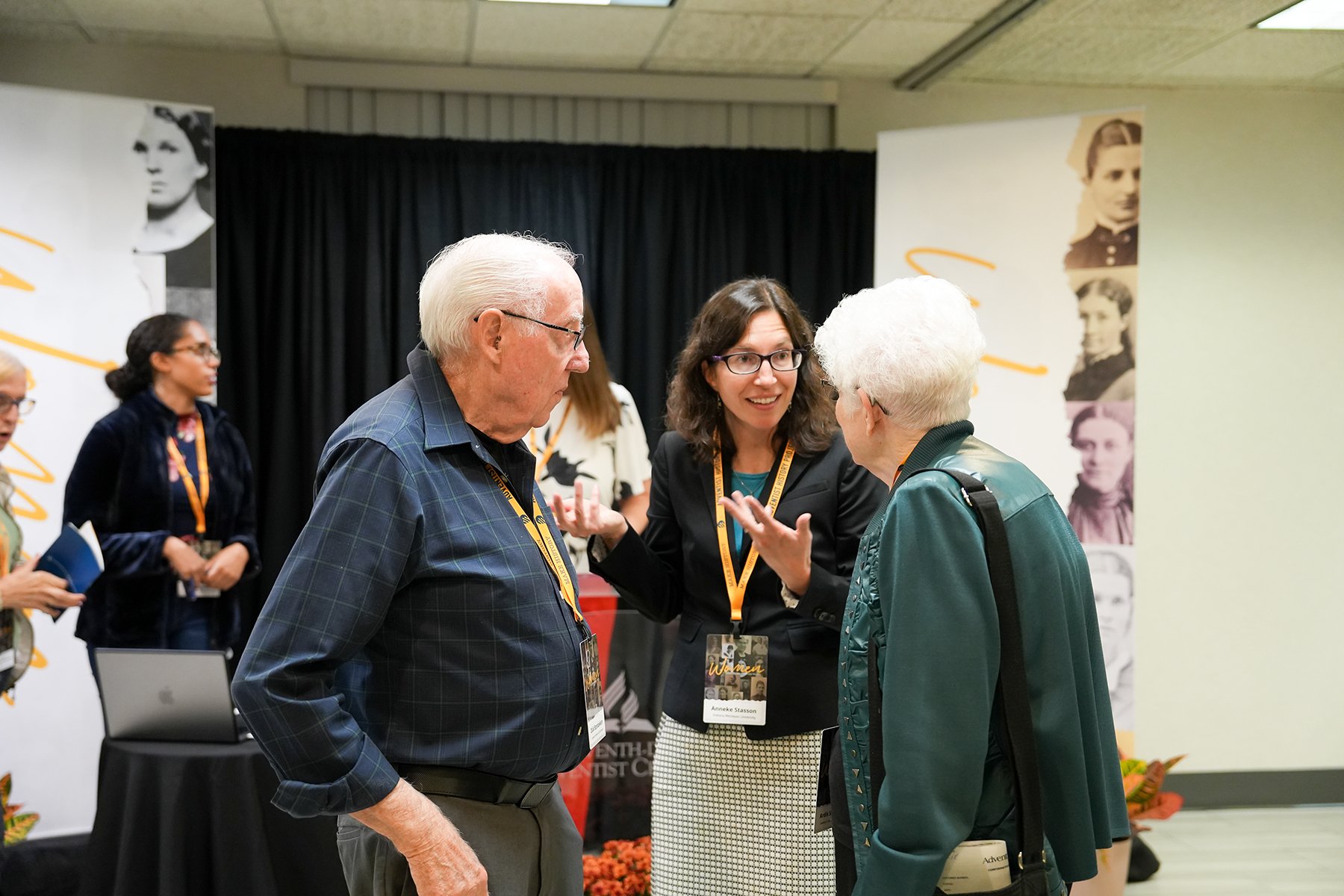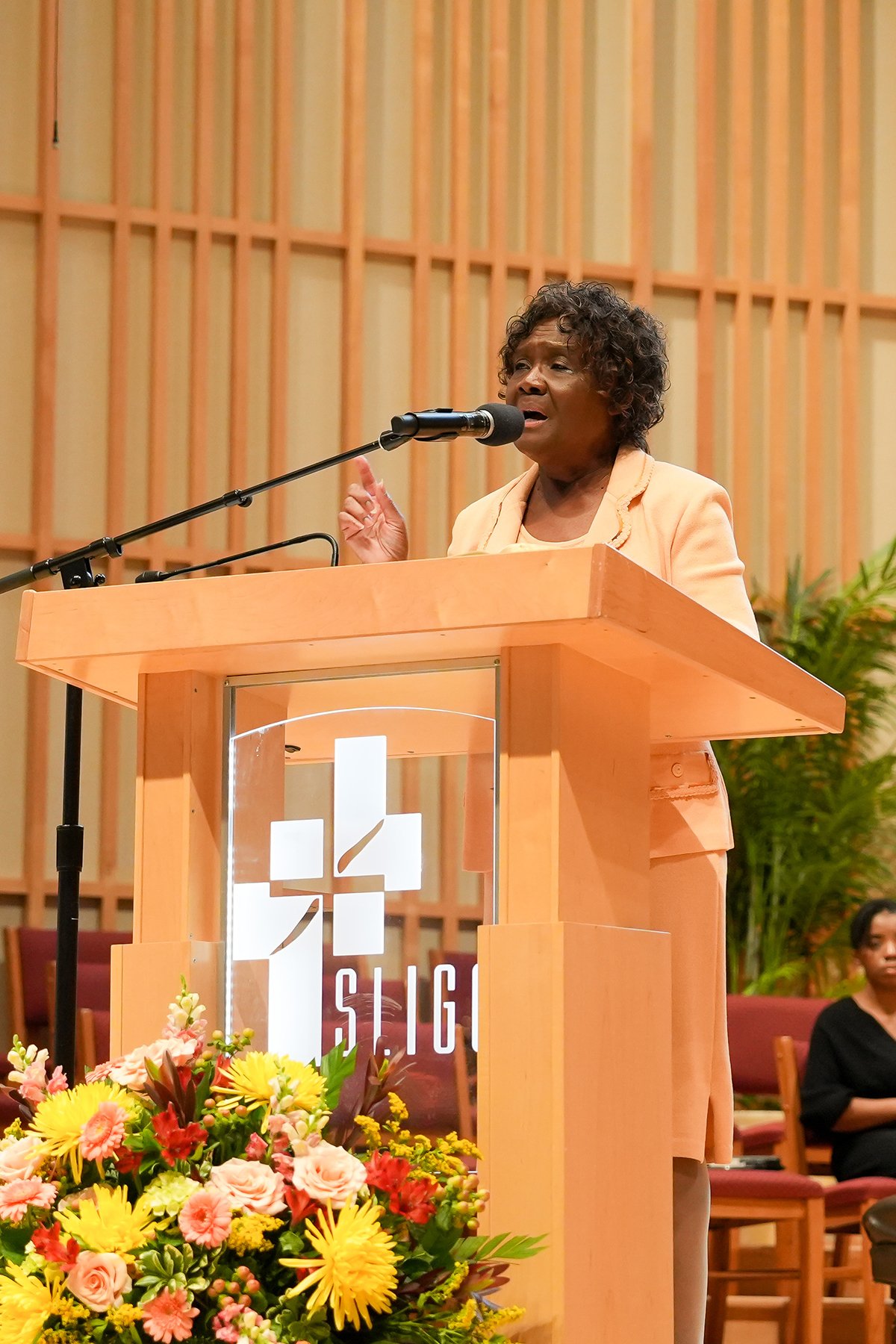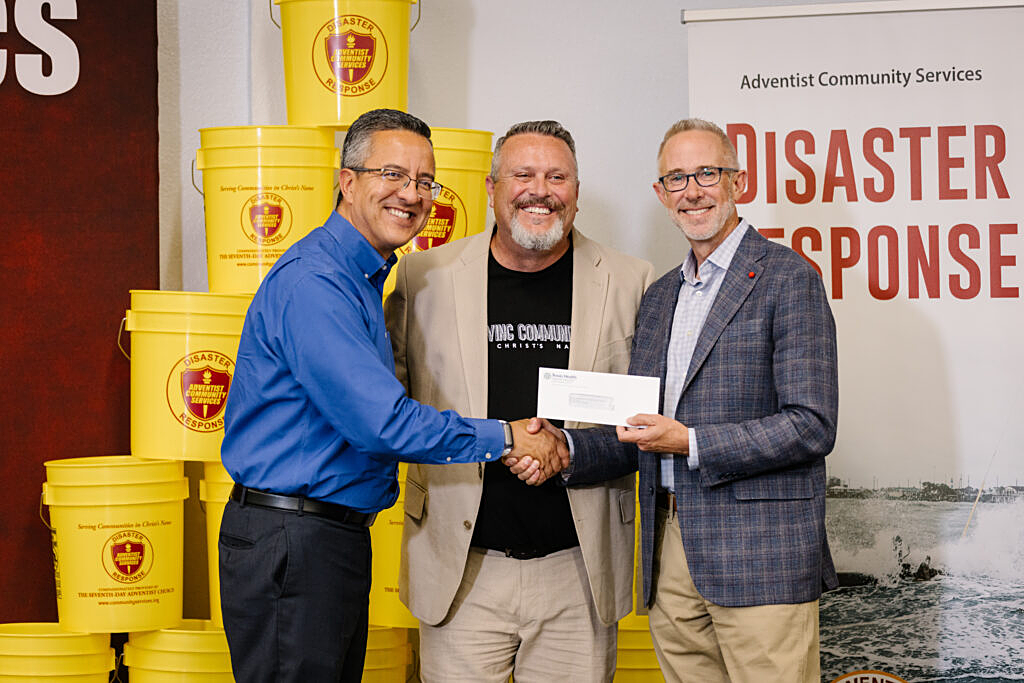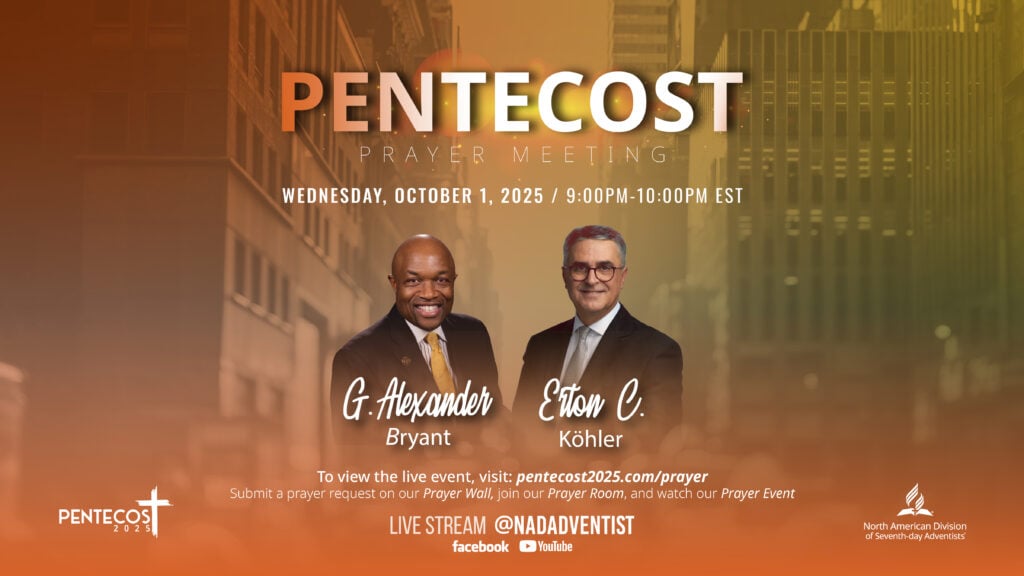When asked to name an influential woman in Seventh-day Adventist history, most will cite the church’s co-founder Ellen G. White. But what about Sarah Lindsey, whose preaching was so powerful she drew crowds away from the Barnum and Bailey circus? Or Lulu Whitman, who baptized more people in a year than all her male counterparts combined? Or Lauretta Kress, a physician who founded and ran several sanitariums alongside her physician husband, Daniel?
At the Women in Seventh-day Adventist History Conference, held October 12-14, 2023, on the Washington Adventist University campus, attendees learned of the hidden legacy of women serving alongside men to build the church. Hosted by the North American Division (NAD) Office of Archives, Statistics, and Research, headed by Michael Campbell, Ph.D., the event attracted roughly 150 attendees—men and women—from across North America, Europe, South America, and Africa. Through devotionals, paper presentations, and plenaries, the conference represented a step toward shifting the church’s history from monochrome to technicolor.
In his opening remarks, G. Alexander Bryant commended Campbell for his “insight and vision” in hosting the conference. “It is good to recognize and honor the women on whose shoulders this church was built,” he said, also thanking the women in attendance for their contributions. “We would not be the Seventh-day Adventist Church we are today if not for the women who have led and stood for decades. We’re better off because of you. And we need all God has given you so we can finish this work and go home.”
Presenters, including professors, independent researchers, students, pastors, administrators, lay members, and others, offered diverse perspectives. Christian scholars Anneke Stasson and Laura Vance set the stage with an overview of women in church history. During her opening keynote, “Women in the Mission of the Church,” based on her book of the same name, Stasson situated women and their engagement within the historical context of the broader Christian church. She revealed that women have been “essential to the mission of the Lord” since biblical times (as evidenced by Paul’s acknowledgment of several women in Romans 16) and have “had to be creative in how they fulfilled their call” when doing so bucked gender norms.

Later, Vance, a sociologist who researches gender and Adventism, noted that in the church’s early days, dozens of women, including Ellen White, were licensed as ministers. Moreover, while White did not take a clear position on women’s ordination, she advocated for women to do the work God called them to and be paid equitably. Over time, however, as the church became more established and leaders embraced fundamentalism, support for women in leadership waned. Nevertheless, women continued to find ways to serve.
A Sabbath message titled “Hidden Figures” by retired General Conference vice president Ella Simmons – the first woman elected to the role in 2005 – compared the church’s reported history to the story of the little-known African-American women mathematicians and engineers who helped propel the U.S. into space. Her message built on the conference’s premise that sharing the contributions of women not only enriches our history but also creates a path for women’s further inclusion within church leadership. Simmons asserted that just like in Nehemiah’s time, when God used men and women to rebuild the walls of Jerusalem, “now it’s our responsibility to build a wall of the complete and accurate history of this church.” In a final call to offer a more inclusive account of the church’s past and present growth, Simmons stated, “When we change our stories, we change the world.”
Hidden in Plain Sight
This conference had its genesis two years ago as Jim Wibberding, professor of applied theology and biblical studies at Pacific Union College, started uncovering “little snippets” of untold stories while developing a class on women in Adventist history. He conferred with Campbell, who also found women’s stories “hidden in plain sight” in photo albums or letters. Campbell subsequently decided to host the conference “not to try to assert [a] political agenda but to tell the church’s history more accurately and paint a broader backdrop of the wealth of women’s contributions.” He and Wibberding see the conference as a starting point, a catalyst for further research and publications.
Campbell also wanted to demonstrate that there are “a whole host of ways to serve the Lord and expand the work of the church.” Thus, the fields represented encompassed pastoral ministry, Bible work, education, healthcare, publishing and editing, finance, and the arts. The conference also affirmed unsung heroes such as secretaries and stenographers, who formed the “information bureau” of the General Conference office, helping steer committees away from duplicate or conflicting actions.

Participants learned of pioneers such as educator and musician Eva B. Dykes, the first Seventh-day Adventist woman awarded a Ph.D.; Lora E. Clement, who served as associate editor, then editor of The Youth’s Instructor for 41 years; Hattie Andre, a hydrotherapy-trained missionary to Pitcairn Island who saved thousands of islanders from typhus; and the 22 Millerite women who proclaimed Christ’s soon return. Furthermore, paper sessions such as “By their Fruits” highlighted the work of Adventist women evangelists, and a presentation on “Women in Technology” by Nancy Lamoreaux, the General Conference’s first chief information officer, underscored numerous women’s efforts in leading the church into the digital era. Other topics included Black women’s fight against racism, equality in pay, ethics, and the history of women and work.
Highlighting Living Legends
On the conference’s final day, two panels facilitated by Celeste Ryan Blyden, the Columbia Union Conference’s first woman executive secretary, showcased “living legends,” including directors, vice presidents, and other administrators at different church levels. These panels offered inspiration as the women spoke of divine guidance, unexpected opportunities, and mentorship from male and female colleagues along their journeys. Their stories celebrated women’s achievements despite barriers and continued the theme of rewriting history.
The anecdotes shared were poignant and, at times, hilarious. For instance, DeeAnn Bragaw, NAD Women’s Ministries director, recalled finding a helpful sign at Hobby Lobby as she deliberated on accepting her current position – “If cauliflower can become pizza, you can become anything.” Ella Simmons recalled that nearly a year after she had obeyed God’s directive to resign from her post as La Sierra University’s provost and vice president for academic administration, Matthew Bediako, then-General Conference (GC) secretary, called. When he asked, “What would you say if I invited you to be vice-president of the GC?” she said, “I laughed like Sarah laughed.” But God worked a miracle when she was elected at that year’s GC Session.
Earlier that day, attendees had heard from Rosa Banks, who became the GC’s first female general field secretary and director of human relations in 1989. Back then, GC leadership had wanted a woman as general vice president, but the executive committee was not ready. The progression exhibited indicates that the narrative for women in church leadership is evolving over time.

Another ongoing theme was men and women being stronger together, particularly in a church and world where women form the majority. Attendee Ardis Stenbakken, retired GC Women’s Ministries director, reflected, “We make decisions now based on our history and understanding our history. And we need women involved. Women think differently. Women act differently. And we need the strength and the ideas and the creativity of everybody.”
Finally, panelists viewed their groundbreaking roles as a win for future generations. Judy R. Glass, named the NAD’s first woman treasurer in June 2023, said, “I follow in the footsteps [of those who] opened doors for me, and this is a door open for future women [leaders].”
“It really isn’t about us,” concurred Ryan Blyden. And when asked if they were mentoring others, all panelists raised their hands.
“We’re all in this together,” concluded Bonita J. Shields, NAD associate secretary.
Inspiration for the Future
The sharing of historical and present-day women leaders was aspirational for several of the women present, including Catusha Desjardins, a junior biology major and honors student at Washington Adventist University. Desjardins presented on Eva B. Dykes as part of an honors seminar called “Women in Seventh-day Adventist History.” The seminar was a collaborative effort between Campbell, his wife, Heidi, who holds a Ph.D. in history focusing on gender history, and Washington Adventist University professors Brad Haas and Jonathan Scriven. Desjardins noted, “[This conference is] encouraging especially to young girls that they can strive to get those leadership roles.”
The conference was also empowering for Esther Louw, an Andrews University student pursuing a master’s degree in church history who aims to work in academia. “It was very positive for me, being in a room with women who have done so many things,” Louw said, continuing, “I grew up thinking there are all these roles women cannot do, and to get that vision of other women who have done [such roles], it’s not just me stepping out on my own. There are footsteps I can walk in.”
Karen Hayde, a chaplain at Cedars Recovery Center in British Columbia, Canada, concluded, “This event has been very enlightening and encouraging. It’s given me hope that my story does matter. There’s so much I don’t know [about women in Adventist history], and I’m inclined to learn more. Because knowing where we come from helps us stand more firmly as we continue moving forward.”
Resources
Recordings on Adventist Learning Community
Women in the Mission of the Church, Anneke Stasson
They Also Served: Stories of Adventist Women – podcast by Heidi Olsen Campbell, launching early 2024
Adventist History Project podcasts with Pastor Matthew Lucio




